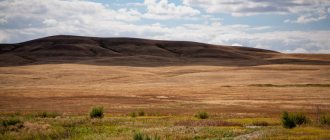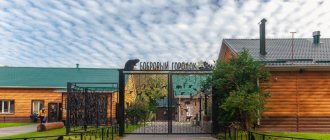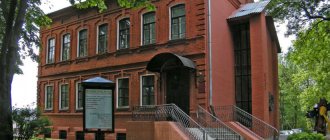What holiday is it today?
December 16, 2021, Thursday
Today are holidays, events: Events that happened on December 16 in the world, in different years Tomorrow: Day of Strategic Missile Forces Day of Employees of the State Courier Service Memorable date in the military history of Russia: Capture of the Ochakov fortress in 1788
Today is the Orthodox holiday of the Prophet Zephaniah. Reverend Savva of Storozhevsky, Zvenigorod. Martyr Angelis... Tomorrow: Great Martyr Barbara and Martyr Juliania of Iliopolis. Venerable John of Damascus...
Today is a national holiday: Day of World Silence and Silence... Tomorrow: Barbarian Day...
Seasons
Seasons, four periods of the year (spring, summer, autumn and winter) characterized by certain average temperatures. The period during which the Sun passes through one of these sectors is called the season. Spring in the Northern Hemisphere and autumn in the Southern Hemisphere begin when the Sun passes through the initial circle of declination and its right ascension is 0° (vernal equinox). Summer in the Northern Hemisphere and winter in the Southern Hemisphere occur when the sun's right ascension is 90° (summer solstice). Autumn in the Northern Hemisphere and spring in the Southern Hemisphere begin when the sun's right ascension is 180° (autumnal equinox). The beginning of winter in the Northern Hemisphere and summer in the Southern Hemisphere is considered to be the winter solstice, when the direct ascension of the Sun is 270°... Next: Seasons. Russian folk calendar. Monthly words...
Population
Oryol, whose population is decreasing every year, is considered an original Russian city. The indigenous inhabitants, of course, are Russians. In percentage terms, they are about 95%. However, other nationalities also live in the territory, although there are fewer of them - 5%. There are less than 2% of Ukrainians in Orel, 1% of Chechens, Azerbaijanis, Belarusians and Armenians, and 2% of other nationalities.
By the beginning of 2000, the population was about 330 thousand people. However, by 2014 this figure had decreased by approximately 13,000 (317 thousand).
Folk calendar about every day
Every day one season always replaces another and this determines a person’s way of life. In connection with this, a folk calendar was formed in which there were practically no nameless, unmarked days. Every day was special, had its own purpose. All this was determined by climate conditions and astrological phenomena.
A calendar is a system for counting periods of time. The first calendars arose a long time ago, in ancient times, because there was a need to measure time. The word calendar comes from the Latin words caleo - to proclaim and calendarium - debt book. This is due to the fact that in Ancient Rome the beginning of each month was especially proclaimed, and because it was customary to pay debts on the first day of the month. Different peoples counted time differently. Some calendars are based on the changing phases of the moon - lunar calendars; in others - the change of seasons - sunny; in others, the length of the year was coordinated with the change of seasons, and the counting of months was associated with the phases of the Moon. Such calendars are called lunisolar.
In Rus', the calendar was called a monthly calendar. Every day, the month book covered the entire year of peasant life, “describing” day by day, month after month, where each day had its own holidays or weekdays, customs and superstitions, traditions and rituals, natural signs and phenomena. The cyclical nature of the calendar is reminiscent of human life, where spring is youth, summer is heyday, autumn is the time of harvesting fruits (it’s good if there are some, otherwise you can live your life without collecting fruits), winter is the time of wisdom and peace. This cyclicality and rhythm determined the way of life of the farmer. The folk calendar was an agricultural calendar, which was reflected in the names of the months, folk signs, rituals and customs. Even the determination of the timing and duration of the seasons is associated with real climatic conditions. Hence the discrepancy between the names of the months in different areas... Next: Folk calendar...
Location of Oryol
It is located on the Central Russian Hill, which is located in the European part of Russia. In order to understand where the city of Orel is located on the map, you need to look south from the capital (Moscow), the distance is approximately 380 km. It is more than 1000 km away from St. Petersburg. Near the Oryol region there are Kaluga, Tula, Kursk, Bryansk and Lipetsk. They have common boundaries.
Orel is a city that is the center of the region. Its length from south to north is about 150 km, and its width (west-east) is more than 200 km. The Oryol region is the smallest in Russia. It also has the smallest population.
Fishing calendar for every day
The fishing calendar should not be taken as an absolutely indisputable truth. Fish biting is greatly influenced by a whole range of natural factors, as well as the influence on the nature of man himself. You must not forget that the fish’s bite depends and is determined not only by the calendar dates and biological cycles of their life, reflected in the calendar, but also, no less, by the state of their habitat; the bite also depends on weather conditions: air and water temperatures, cloudiness, wind direction and strength, etc... Next: Fishing calendar...
Historical sights of the region
History is our past. How many mysteries we inherited. In the Oryol region these are ancient settlements, strange stones, and mounds that carefully guard their secrets.
Mount Samorod
- Coordinates: 53.281605, 36.561657.
A high hill with steep slopes on the left bank of the Zushi is called Cathedral or Mount Samorod. Once upon a time there stood the ancient Mtsensk fortress.
In the 16th century, two monasteries were founded - the Peter and Paul Tabernacle and the Ascension, and 100 years later - several fortresses that communicated with the outside world through manholes and passages.
At the top of the mountain stood a beautiful stone temple - St. Nicholas Cathedral. It was destroyed in the 30s. XX century. Today, the top of Mount Samorod is crowned by the St. Nicholas Chapel, built in 2000.
Stone megaliths in Dumchino
- Address: s. Dumchino, Mtsensk district.
The boulders in the Dumchinsky forest are nothing more than a megalithic complex. These are the so-called trace stones of glacial origin. On their surface you can see the imprints of human footprints, paws of animals and birds.
Local residents considered them divine. Some of the boulders here have very strange shapes and look more like people or animals.
There is a strange energy in this place. The compass needle often dances, you lose your bearings, and your head starts to hurt. The forest itself is called “rotten” not only because of the dampness, but also because of the many diseased trees.
Kurgan burial ground Radovishte
- Coordinates: 53.270232, 35.370583.
The archeological monument is located on the territory of the Oryol Polesie National Park, next to the ancient Baltic settlement of the same name. It is believed that this was the first settlement established by the northern tribes on their way to the south.
The burial ground, located 1.5 km from the settlement, no longer belongs to the Balts, but to the Vyatichi Slavs. It is considered one of the largest and most preserved in the Oryol region.
For several centuries, clay vessels containing remains from cremations were buried here. During excavations in the mounds, neck torcs, beads, knives, and temple rings were found.
Khotyml ancient settlement
- Address: Khotynetsky district, Khotiml-Kuzmenkovo village.
The settlement, which was once one of the largest fortresses in the Oryol region, is located in the village of Khotiml-Kuzmenkovo. It is located on one of the banks of the right tributary of the Vytebet, and rises 5 m above it. It is a fortified settlement, surrounded by a ring rampart and a two-meter-deep ditch.
Inside the fortress walls there was a Kremlin, boyar mansions, and warehouses. There was also a spring, with the help of which the inhabitants of the fortress could withstand a long siege. Excavations have shown that Khotiml ceased to exist around 1310.
Blue stone in the Olkhovets tract
- Address: Olkhovets tract.
This stone is the only one of its kind in the Oryol region. According to legend, the mark on it belongs to the Lord himself. Standing on a stone, he prayed for the victory of Christians over the troops of Devlet-Girey during the Battle of Judgment.
This boulder is truly huge. Its weight is about 45 tons, and the depth of the track is almost 10 cm. By all parameters, this is the largest track in Central Russia. And it is called blue because of its peculiarity. After rain, the gray surface of the stone, formed by quartz biotites, changes color, refracting and reflecting the sun's rays.
Orthodox calendar about every day
Orthodox calendar: Orthodox, Church and Christian holidays.
The church year is an alternation of weekdays and holidays. On weekdays, a person is called to work “by the sweat of his brow to earn his bread.” Holidays are given in order to feel liberation, to rise above the bustle and routine of the world, to feel involved in the highest of worlds, “where there are no illnesses, sorrows and sighs, but endless life.” Since ancient times, holiday cycles have been associated with the seasons. The pagans associated them with the worship of the forces of nature, the cult of which in the Old Testament was replaced by gratitude to the Creator for the universe. And although the connection between holidays and the seasons has not completely lost its power, since God is present in everything, in the plant and animal world, in human works, it nevertheless faded into the background, giving way to a spiritual foundation built on the Sacred Scriptures. The history of Orthodox holidays dates back to the times of the Old Testament. Each of the Orthodox holidays is dedicated to the remembrance of the most important events in the life of Jesus Christ and the Mother of God, as well as the memory of saints... Next: Orthodox calendar...
Russian folk calendar for every day
The word “sign” comes from the word “notice”, i.e. observe. As a result of observing what happens around a person every day, he accumulates life experience. This knowledge was passed down from generation to generation, carefully preserved and people trusted it as a sacred book. Many signs have come to us from the depths of centuries without losing their knowledge. Each of us is free to choose: to dismiss all this as an absurd superstition or to take a closer look at the signs and take the centuries-old experience of generations more seriously. Most of us, when taking exams, ask them to scold them, boasting about some kind of good fortune or luck, spit so as not to jinx them or knock on wood, take a detour if a black cat crossed the road, are afraid of the number 13 and much more. And who among us does not have lucky things, numbers? Who has never resorted to the help of fate at least once in their life, who has not believed in secrets? It’s as if everything connected with signs is hidden somewhere deep in our subconscious. Often we remember them mechanically, unconsciously, or just as a joke. But, undoubtedly, the signs contain a lot of accurate knowledge and practical wisdom of our ancestors. They cover all the characteristic, often difficult to perceive, natural phenomena. Signs have preserved a lot of what was in old folk holidays and customs; they help predict the weather, grow crops... Next: Folk signs...
Mysterious caves of Oryol region
The underground world has always worried those who live on the surface. That is why caves are always studied especially carefully. Maybe they are where the secrets of all humanity are kept.
Pyatnitsky caves
- Coordinates: 52.951293, 36.089745.
Karst caves on the banks of the Oka already existed when, in the 18th century, Catherine II issued a decree to use them for the production of white stone. Mining stopped only in the 20th century.
During the Second World War, the caves served as a reliable shelter for partisans and local residents from the Nazis. There are 4 caves in total, each of them is about 500 m long. Today they are used to attract tourists.
Mtsensk caves
- Coordinates: 53.299168, 36.580832.
The caves on the banks of the Zushi near Mtsensk have been known for a very long time. Scientists continue to debate about them. Some believe that these are ancient quarries, others insist on natural origin. All caves were given the name Mtsenskaya and a serial number. There are 8 of them in total.
Speleologists explored each of them. The first 6 are similar to each other, consisting of a hall and several dead-end passages. Their depth is about 2 m.
The last cave consists of three halls with low passages between them. From one hall you can go to the surface. Mtsenskaya-7 is the most interesting cave of the group. It is famous for its 10-meter gallery ending in a flat wall.
Holiday calendar, dates and events of the year
All state and professional holidays in Russia, including significant World and International holidays, and other equally interesting holidays and events about every day.
The holiday has always kept pace with the history of mankind. Social time can be divided into three types: everyday life (weekdays), weekends and holidays. Everyday life is a series of practices repeated day after day and every day (work). Weekends are regular breaks from the rush of everyday life. It is believed that on weekends a person should restore his strength after working days. Day off, non-working day. A holiday is a day of celebration established in honor or in memory of someone or something. A day or series of days celebrated by the church in memory of a religious event or saint... Next: Calendar...
Famous places in the city
Recreation places where locals and guests spend time are the City Park of Culture and Recreation, Lake Bright Life, and Alexander Bridge.
The multifunctional complex, which includes many shops, cafes, restaurants, and entertainment centers, has gained the greatest popularity among young people. Here are the largest nightclub in the Black Earth Region “Clocks”, karaoke bar “Night”, “Celebration Restaurant” and others. Other famous establishments in the city include the Labyrinth restaurant, the karaoke club Oz-bar, and the Na Privale cafe.
Prayer book, Orthodox prayers for every day
Prayer is the most powerful means for healing all illnesses - both physical and mental. Prayers can be laudatory or grateful, petitionary and repentant. If we have offended God, sinned, we must ask Him for forgiveness, that is, repent. Such prayers are called repentant prayers. If everything is fine with us, if we and our loved ones are healthy and prosperous, if we have a place to live, something to wear, something to eat, we must glorify and thank God for this. Such prayers are called praise or thanksgiving. If some misfortune, illness, trouble or need happens, you need to ask God for help. Such prayers are called petitionary... Next: Orthodox prayers...
Zodiac, astrological, eastern calendar. Zodiac signs
In ancient times, to establish the calendar, priests used knowledge of the positions of all the planets. Before the reform of Peter 1, the New Year was celebrated on the Day of the Autumn Equinox. On this day, according to ancient legend, the most peaceful treaty was concluded between the Great Race (ancient Slavs) and the Great Dragon (ancient Chinese) and it was approximately 7518 years ago... For the ancient Slavs, the calendar month corresponded to the lunar cycle from new moon to new moon, taking into account such Thus, the relationship of the entire annual cycle with astronomical and natural phenomena. There was no coherent calendar system. The main natural phenomena are still considered to this day to be the days of the solar equinox and solstice - the Slavic holidays Maslenitsa, Kupala, Ovsen and Kolyada. But during the time of Peter 1, all ancient Slavic calendars were abolished and a new Western European calendar from the Nativity of Christ (Julian calendar) was introduced, while the beginning of the calendar was moved to January 1. The Julian calendar (old style) did not take leap days into account and accumulated one extra day every 128 years. After the October Revolution in 1918, the Gregorian calendar (new style) was introduced in Russia, according to which an amendment of 13 days was introduced. The calendar of the ancient Slavs was based on two planets: the Sun and the Moon. And now they don’t use anything at all. The calendar has become static. There is no such thing as the calendar, it turns out, resting on some planet. Nobody even knows about it. There are just some standard numbers, there are months and holidays. The calendar is based on the Sun and Moon. Why is this so? Because these two luminaries influence the Earth. The Earth revolves around the Sun, and the Moon revolves around the Earth. And these two luminaries create the atmosphere on the planet. From here the calendar is built... Next: Astrological calendar...
Abandoned estates: heritage of the Oryol region
The 20th century destroyed the heritage of the past. The beautiful architecture of noble estates and castles will no longer enchant the hearts of romantics. Over time, everything will sink into oblivion, down to the last brick. All that will remain of its former splendor are beautiful pictures in history books.
Hunters Castle
- Address: 1, Yakovka village.
A luxurious castle in the Gothic style is located in the village of Yakovka, Kolpnyansky district. It was built on lands granted by Catherine II to court councilor Ya.A. Okhotnikov. Later it passed to his descendant, who built this building. But he did not settle there himself, but opened a sugar factory.
After the revolution, the beautiful castle was nationalized. It housed first a village club, then a canteen. Today, nothing of the interior decoration remains. Only the walls have survived - excellent examples of 19th-century architecture.
The Golitsyn estate in the village of Golun
- Address: s. Golun, Novosilsky district.
The history of the estate began in 1780, when Prince M.A. Golitsyn acquired the village of Golun. Today this is the territory of the Novosilsky district. There was a horse yard and a cloth factory there. A little later, a magnificent architectural ensemble appeared, built according to the design of A.N. Voronikhin in classical style. It consisted of a manor house with outbuildings and a church.
The Great Patriotic War and time did not spare the estate. All that remains of it is the horse yard and some of the outbuildings have been preserved. Now they are used as outbuildings by local residents.
Shvartsev Estate
- Address: 3, Belyi Kolodez 1st village.
The family estate of the world-famous artist V. G. Schwartz is located in the village of Bely Kolodez, Kolpnyansky district. This is one of the main attractions of the Oryol region. Today, very little remains of the estate.
The station building, which is often confused with the manor house, is the best preserved. The building is already more than 200 years old, but it is gradually being destroyed. Of the outbuildings, the walls of the barnyard and stables are still standing.
The church-mausoleum in which the famous artist was buried was destroyed in 1965. It remains in this condition now. The abandoned estate can rightfully be called the ruins of a beautiful noble life.
Kurakins' estate
- Address: s. Preobrazhenskoye, Sverdlovsk district.
The Preobrazhenskoye estate, owned by Prince A. B. Kurakin, amazed everyone with its splendor, rivaling the palaces of emperors. A linden alley led to the estate gates; at the entrance there were guardhouses with installed obelisks. The three-story palace was built of wood, as were the church and numerous outbuildings.
Even for the servants, separate houses were built according to a single design. Adjacent to the manor house was an amazingly beautiful park with fruit trees, flower beds and flower beds, pavilions and greenhouses. More than 800 people were required to serve the “noble nest”.
Everything fell into disrepair with the death of the owner. His descendants were unable to appreciate the splendor of the past era. During the Second World War, there was an ammunition depot on the estate's territory, which was blown up during the Nazi offensive. This is how “The most famous noble nest of the Oryol region” was destroyed
Sheremetev estate in Glazunovo
- Coordinates: Mtsensk district, Glazunovo village.
V.A. Sheremetev, an actual privy councilor from an untitled branch of the family, acquired the estate in the 60s of the 19th century for his youngest son. He didn’t visit Glazunovo often, preferring the romance of Paris, but he still brought order.
A stone palace appeared on the estate, equipped with an artesian water supply, a luxurious library, baths and an oil generator that generated electricity.
Behind the estate there was a park with cascading ponds and a church resembling a park pavilion. It has survived to this day, although it is not used for its intended purpose. In addition to the church, a water pump, a barn, a stable building and an upper pond survived.
Be sure to look at interesting places in the cities of the Oryol region - Mtsensk and Orel
Dream books online, interpretation of dreams
A dream book is nothing more than an interpreter of dreams and dreams, a translator of dreams. Since ancient times, people have been using dream books; dreams have always been given great importance, and people have often noticed the prophetic properties of some dreams. The dream book can become your faithful assistant every day and throughout your life, thanks to the dream interpreter you can always make the right decisions, the dream book will help you resist temptations in time, and will warn you against wrong steps and frivolous actions. Further…











